Common names: Olmo, Scrub Elm, Lime Elm, Fall Elm,, Texas Elm, Basket Elm, Red Elm, and Southern Rock Elm
Cedar Elm is the most widespread native elm in Texas. It native Texas range expands all over the eastern half of Texas except the extreme southeasternmost counties that abut the heel of Louisiana. It is a tough, highly adaptable shade tree with excellent drought tolerance. Cedar Elm can withstand heavy, poorly drained clay soils and moderately compacted soils. It is the only native Texas elm that flowers and sets seed in the fall.
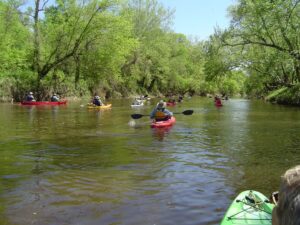
Cedar elm may get its name from its bark that resembles cedar. Or, more likely, it was named for the company it keeps as its favorite native neighbors in the dry limestone hills of central Texas is the Ashe Juniper (Juniperus ashei). The junipers are called cedars though they are not. These neighborhoods of cedar elm and junipers along with live oaks, Shumard red oaks, and hackberry are called “cedar breaks”.
Though an elm, it has the uncommon trait of setting seeds in the fall. The highly uncommon September elm (Ulmus serotina) is the only other Texas native elm that sets seed in the fall.
For tree buyers, It is important to note that winged elms, which don’t grow well in North Texas, are often mistaken for cedar elms in the nursery trade. You can differentiate the two by rubbing a few of their leaves. The top of a cedar elm’s leaf will be rough like sandpaper and a winged elm’s leaves will generally be smooth and slick.
Cedar Elm Native Range
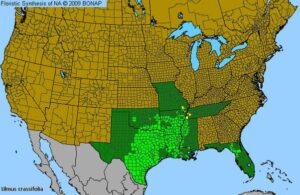 Its native range of 5 states, Texas, Louisiana, Arkansas, Mississippi, and Oklahoma, offers mild temperatures throughout the year with an average July temperature of 82° F and an average January temperature of 46° F though the average coldest winter temperatures in its native range vary from as low as 41° F in Oklahoma to as high as 63° F in South Texas.
Its native range of 5 states, Texas, Louisiana, Arkansas, Mississippi, and Oklahoma, offers mild temperatures throughout the year with an average July temperature of 82° F and an average January temperature of 46° F though the average coldest winter temperatures in its native range vary from as low as 41° F in Oklahoma to as high as 63° F in South Texas.
Its native range States have an average annual rainfall of 45 inches varying from the dry South Texas averages of 18 inches to Louisiana’s wetter average of 58 inches. The average number of days without a killing frost is 236 with a minimum growing season of 220 days.
Through introduction outside its native range, the cedar elm has thrived endowing new, mainly in the Gulf Coastal Plain, areas from Florida to Texas with its easy-to-care-for shade and excellent natural habitat. Its ability to tolerate a variety of conditions has made it a successful as when introduced to areas outside its native range that fall within key parameters.
The hardy elm is tolerant of poor soils including rocky soils and deep clay as well as being drought tolerant after naturalized. It is no wonder this Texas native also thrives in Louisiana, Arkansas, and areas of other states.
General Characteristics of Cedar Elm
- Tree Size: medium-large tree
- Exposure: sun, but can tolerate the shade of taller trees
- Fruit Characteristics: winged samara in the fall
- Height: generally, 40-50 ft but 90 ft possible, smaller in drier, less fertile conditions and larger where soils are fertile and receive adequate rainfall
- Width: generally, 30-40 ft but 80 ft possible
- Plant Character: deciduous
- Heat Tolerance: very high
- Water Requirements: medium low
- Soil Requirements: alkaline adaptable
- USDA Hardiness Zone: 6
Leaves
A cedar elm’s leaves are symmetrical ovals with finely toothed edges that grow along its branches. The cedar elm’s leaves are where it gets its Latin name: crassi- meaning thick because its leaves are thicker than other elms, and folia which means leaf. Its leaves are also the smallest of native elms. The cedar elm is easily discernible from other elms from its leaves’ rough, sandpapery feel.
Leaf Shape & Habit
Its leaves are small and rough, and glossy green in the spring. After turning a golden dusty yellow, the leaves fall. For those in the wild, mistletoe is often present making it look like the dormant deciduous tree is an evergreen in the middle of winter. Leaf characteristics:
- Leaf Complexity: Simple
- Leaf Shape: Elliptic, Ovate
- Leaf Venation: Pinnate
- Leaf Margin: Crenate, Double-serrate
- Leaf Apex: Obtuse
- Leaf Base: Cuneate, Oblique, Rounded
Bark, Limbs & Canopy
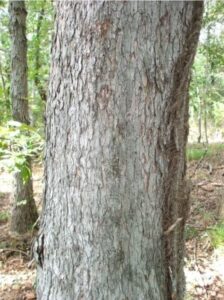 Cork-like “wings” grow on twig edges to help the cedar elm survive windy, hot, infertile conditions and extended droughts. Its grey bark is scaly rather than furrowed.
Cork-like “wings” grow on twig edges to help the cedar elm survive windy, hot, infertile conditions and extended droughts. Its grey bark is scaly rather than furrowed.
The canopy of a cedar elm is most often uneven in appearance as it is made up of knurled limbs. In a landscape setting, the canopy is often rounder and extremely full making it a beautiful shade giver. In the wild, it often is more vase-shaped.
In fact, cedar elms’ canopy shape and size are very influenced by its environment. Along the Colorado and Brazos Rivers, the cedar elm grows to be a very large tree among a variety of oaks, ashes, sycamore, and hickory. But in the cedar breaks of the dry limestone hills of Texas and Oklahoma, the tree is smaller and scrubby. Come visit Columbus, TX, where Terra Sombra Farms is located. In the area, you can see many beautiful large specimens of cedar elm along the Colorado River from the comfort of your car as you drive over the many bridges that traverse the bowed river.
Flowers, Fruits, & Seeds
Petal-less flowers form from late July through early September. The small flowers are actually fascicles of three to five on filaments of green pistils and purple anthers. These inconspicuous flowers grow from the axil of the leaves (where the leaf attaches to the branch). About a month after emerging, they give way in September or October to very noticeable clusters of winged samaras which are flat, oval seed packets.
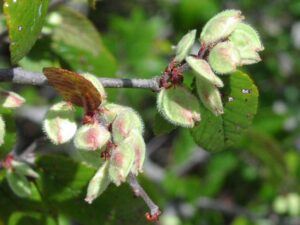
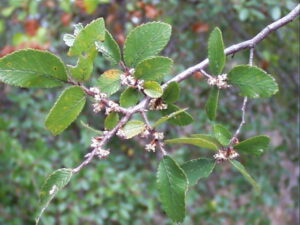
The cedar elm is highly successful in the wild because its seeds are easily carried by the wind to a wide area. The samara are the fruit of the tree with the seed visibly forming as a reddish bump in the middle.
Habitat & Conservation
Cedar elms’ trunks often form doughty spots offering hollows for native bees including honeybees, raccoons, owls, and more.
These Texas natives produce an abundance of seeds that are eaten by birds including turkeys, rabbits, opossums, squirrels, and rodents. Deer graze on the leaves and young twigs in the spring.


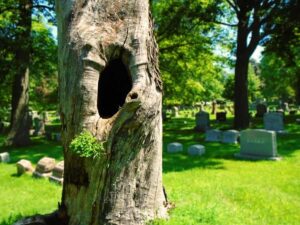
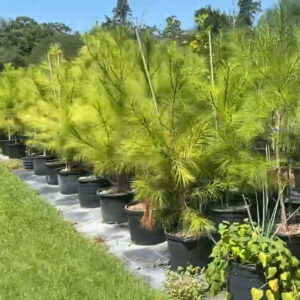

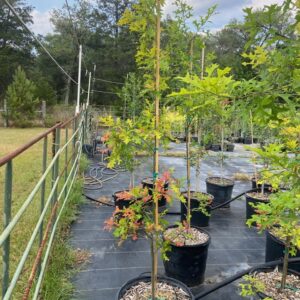
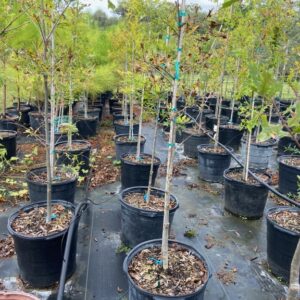
Reviews
There are no reviews yet.